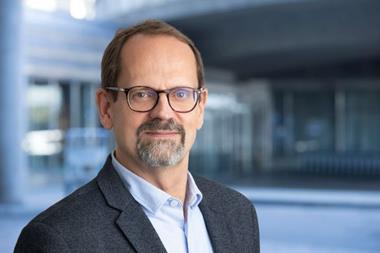Fabrizio Montelatici, pension fund director, Unicredit Group
Unicredit’s open pension fund, with around €1.5bn in AUM at the end of 2006, is split into two sections: one providing regular pension benefits through a collective contribution scheme, and one operating through an individual contribution scheme.
The fund provides a single investment solution but from 1 July it will start offering a guaranteed insurance line. From 2008, it will become a multi-compartment fund, with different investment solutions according to the age of its members.
The monocompartment set-up invests 50% of the assets in real estate. But, the establishment of new compartments will see a marked diversification of the portfolio. “The strategy is to reduce investment in real estate to 20%, for all the new compartments which we are in the process of setting up,” says fund director Fabrizio Montelatici.
“Now the fund also invests around 7% of the assets in alternatives and we intend to replicate this strategy for all the new compartments. The remainder is invested in fixed income and bonds, which account for 29% of the assets, and equities, which take up around 14%.”
Montelatici is uncertain as to the assets that will fall into the industry’s coffers after the TFR reforms: “It is not easy to estimate how much money will be available for pension funds. Private pension products have not yet entered ordinary people’s perception, and the latest estimates are very optimistic.”
The new legal framework provides that the TFR benefits of those who had not explicitly stated by the end of June that they want to put their money into funds will remain vested with the employer. “We will have to assess the impact of these so-called silent choices, which will most likely come from disinformation or unawareness.”
Montelatici believes there will have to be a sea-change in terms of fund directors’ attitudes, investment strategies and investment culture if TFR assets are to transfer to pension funds.
“If there is to be a considerable flow of new assets, it will be necessary to change funds’ investment policies, both through diversifying the products and the markets we invest in. However, we will definitely keep a focus on real estate, which new funds cannot access today because of short supply.”
Montelatici outlines changes already affecting the industry: “Fund directors already have to engage in a plethora of tasks that are costing them money, especially as a higher degree of attention to the customer is required, as well as stronger performance. Funds will have to actively encourage a culture of investment, with the prospect of changing people’s perceptions.”
Alessandro Zanon, president, PreviGen open pension fund
PreviGen, the open pension fund of Assicurazioni Generali, will start managing three new savings schemes that will offer different risk/reward prospects and investment time frames.
Today PreviGen, which had around €328m of AUM at the end of 2006, operates through a traditional insurance-based scheme that offers guaranteed returns. But, the fund’s statute allows the board to run other types of schemes.
PreviGen’s scheme is managed separately by Gestione Speciale Assicurati Vita, an entity of Assicurazioni Generali. Its mission is to obtain returns that outperform traditional risk-free instruments by optimising the duration of the portfolio and following an asset liability management strategy.
“Our philosophy is to maximise returns in the medium to long-term, while constantly monitoring the risk/reward mix of the portfolio, as well as investing in high-quality instruments with solid a financial profile and significant growth potential,” says Zanon.
Following the traditional guaranteed-return scheme, the new compartments that PreviGen will operate will be called cautious, balanced and aggressive.
In the cautious compartment, 80% of the portfolio will be invested in bonds and investment in equities will not be more than 20%.
Investors in the balanced compartment will see 60% of their assets focused on bonds and no more than 40% invested in equities. The aggressive compartment’s portfolio will be split between 60% in equities and 40% in bonds.
As to the TFR reforms, Zanon is less optimistic than the Italian government. The government estimated that in the first six month of the year around €6.5bn would be available for pension fund managers, but Zanon thinks that the figure will be closer to half of that.
“In the first phase, a significant number of workers will opt to pay their contribution through their employers. However, they are likely to change this decision, which would not be possible if workers decided to go into private schemes in the first place. I think that even the most undecided today will switch their opinion about private schemes in the future, and that there will be exponential growth in future years,” he says.
Zanon adds: “PreviGen is already trying to respond to the needs of a more mature benefits market. The fund will also allow workers to split their contribution and their earned income between the three compartments, and modify the way investments are spread yearly, following a ‘personal portfolio’ model.”
As to how the market may change, Zanon says that there still is a strong need for security. Employees who opt for private pension funds expect the same solidity and reliability as their company’s TFR regime, and one of their objective is having their investments available to buy a house when they want to. “This is a typical feature of Italians. They will need some time to become aware of the meaning of retirement and investments.”
Zanon adds: “One of the true challenges is making young people aware of their benefit situation. Joining a pension scheme is in their interest, as the Dini reform has slashed their pensions to 50% of their final salary compared to the 70-80% that current pensioners get.”
Andrea Girardelli, director, Fonchim closed pension fund
Andrea Girardelli, director of the €1.7bn Fonchim pension scheme, is confident that a number of changes will take place once the effects of the long-awaited Italian pensions reform kick in.
Fonchim, the closed fund for chemical and pharmaceutical workers, currently has three investment compartments. Around 90% of the assets are invested in its stabilitá compartment.
Investors in this compartment have 70% of their assets in short-term fixed income instruments with a one-to-three year maturity.
The other 30% is invested in equities. The crescita compartment, which takes up around 5% of the assets, is split between 60% equities and 40% bonds. The moneta compartment is invested 100% in equities.
Of the forthcoming changes in the Italian market, Girardelli says: “What will surely change, as this new way of saving money is available, is the relationship between firms and their employees, as well as the way in which companies and pension fund managers relate to each other,” he says.
“Private pension funds are a new entity that will be asked to give advice. There will be a new link between the subject of work and the subject of savings.”
Girardelli also believes that employers may begin to focus on retirement issues in the future.
Fonchim has more than 115,000 members employed by 1,800 pharmaceutical and chemical companies, and is one of the country’s largest pension funds. However, Girardelli does not believe that he will lose any sleep due to the reforms.
His forecasts are much less optimistic than the €5-6bn government figure for assets coming into funds after the TFR reform.
“There could be around 100,000 new members joining the market. Fonchim is seeing 23,000-25,000 of these. Overall, the money flowing into the market will be closer to €1bn, and this is an optimistic figure,” he says.
“Fonchim already has around 70% of its market, and the reform will not impact us that much.”




























No comments yet